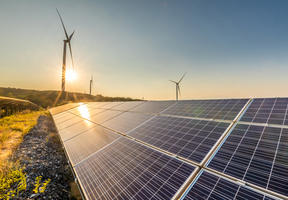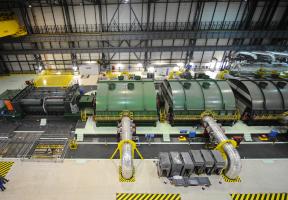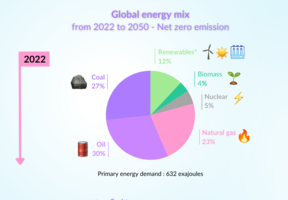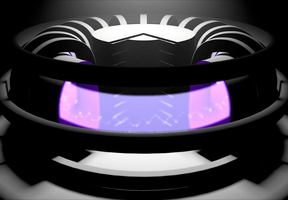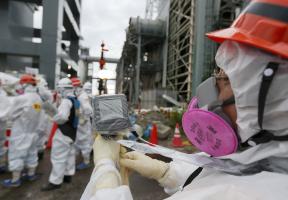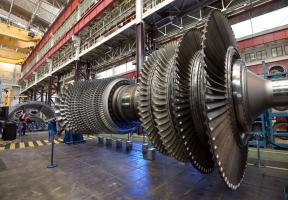Radioactive Waste Management
10 min read
Radioactive waste is material that can no longer be used by nuclear industries, and must therefore be managed in a special way. This management must take into account two criteria: their radioactive intensity and their lifespan, the period during which they remain radioactive. Some waste can remain hazardous for thousands, even hundreds of thousands of years.
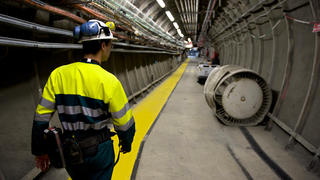
© Cigéo, a planned radioactive waste storage center in eastern France, will be situated 500 meters below ground in a layer of clay that can contain the radioactivity. AFP PHOTO / JEAN-CHRISTOPHE VERHAEGEN
Several sectors are involved
Contrary to popular belief, not all waste comes from the nuclear industry, but also from three other sectors: defense, research and medicine. In France, waste from generation accounts for 61%, compared with 39% for other sectors.
Different types of waste
In France, nuclear waste is classified into five categories based on two main criteria: the level and longevity (radioactive half-life) of the waste1.
- Very-low-level waste (VLLW) comes from the maintenance and dismantling of nuclear facilities and includes earth, rubble and scrap metal. It has a radioactivity level similar to natural radioactivity (less than 100 becquerels per gram – Bq/g) and is treated as conventional waste in some countries. VLLW represents 27% of the total volume of French radioactive waste, but less than 0.01% of its total radioactivity. Since 2003, this waste has been stored at the Centre industriel de regroupement, d'entreposage et de stockage (Cires), in the Aube department.
- Low and intermediate level short-lived waste (LILW-SL) with a half-life of no more than 31 years. It is mainly associated with the operation of nuclear power plants. Their level of radioactivity ranges from a few hundred to one million becquerels per gram. In France, they account for most of the total volume (63%) but only 0.02% of radioactivity. They are compacted, deposited in metal containers and stored above ground. Since 1969, France has had two centers dedicated to this type of waste: the Centre de stockage de la Manche (CSM) and the Centre de stockage de l’Aube (CSA).
- Low-level long-lived waste (LLW-LL) mainly comes from first generation nuclear reactors (graphite / gas) that are now being dismantled. It regroups wastes such as graphite or and represents 7% of the total volume of French radioactive waste and 0.01% of its total radioactivity.
- Intermediate-level long-lived waste (ILW-LL) is composed of components of nuclear reactor structures and has a radioactivity level of between one million and one billion Bq/g. ILW-LL represents 3% of the total volume of French radioactive waste and 4% of its total radioactivity
- High-level waste (HLW) insulated in glass matrix is the residue from the processing of spent nuclear and is produced in small volumes. All the HLW ever produced by the French nuclear industry would fit into a 13m-high cube. However, it represents 96% of the total radioactivity of French radioactive waste, as it has a radioactivity level of several billion Bq/g.
Conditioning and storage
- The first two categories of waste are not an issue.
- Conditioning low-level long-lived waste presents no technical difficulties. However, its long-term storage, ensuring that it is safely stored and monitored for several thousands of years, is far more problematic. For the moment, this waste is kept at nuclear sites such as Marcoule in France2.
- The two remaining categories (intermediate-level long-lived waste and high-level waste - ILW-LL and HLW) require management methods adapted to their hazardous nature and lifespan. These wastes are vitrified – incorporated into molten glass – to ensure their containment long into the future. The glass is poured into stainless steel containers and stored in France in ventilated pits at the center at La Hague. No radioactivity is released from the containers, but they are closely monitored in what are called "warehouses". Intermediate-level waste is either compacted or packaged in various types of matrix (cement, pavement) and currently stored.
The reference option for the management of these wastes ILW-LL and HLW consists in storing them at great depth (about 500 m) in a stable geological environment capable of isolating them durably (at least one million years) from man and the environment. This solution is adopted by the vast majority of countries with nuclear power plants.
Such solutions are subject to national legislation in countries around the world. France’s national radioactive waste management agency (Agence nationale pour la gestion des déchets radioactifs –ANDRA), is intended to implement management solutions for all radioactive waste produced on the national territory. In January 2023, it submitted a construction permit for the Cigéo geological storage facility, which would be located in eastern France, on the edge of the Meuse and Haute-Marne departments. The selected geological layer is a clay layer located in the Paris Basin, a geological area of great stability.
Sources

